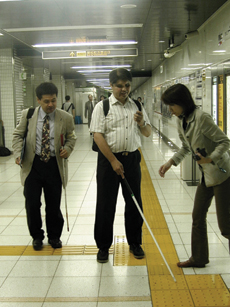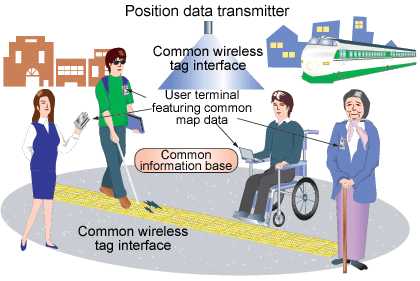| 4. Verification of the Common Information Base for the Individual Passenger Guide System and its Availability | |||
|
Information for railway passengers is mostly offered on bulletin boards for an indefinite number of passengers. However, to improve passenger convenience it is preferable to offer information that is individually tailored to passenger characteristics and situations, using either a human interface or some other appropriate method. This idea is useful not only in terms of accessibility for all, but also as a means of giving information when, for example, train operation is disrupted. A system was developed to guide passengers smoothly from station to road by extending the information service for those with visual impairments. A long-term evaluation test of the system was conducted in stations and on surrounding roads (Fig.1). The test results verified that passenger movement time is reduced as people become accustomed to the system and the psychological burden is reduced. Problems with over-dependence on the system were not found. A method was devised for implementing the information infrastructure and portable terminals for passenger use (including those with visual impairments), using a new position identification system based on wireless tag technology and passenger guide data described in XML language (Fig.2). A prototype of the system was created to test its basic functions. A method for describing map data that can commonly be used both in railways and roads was laid down to implement a smooth guide environment between railway and road spaces. The map data will serve as a basis for the above passenger guide data. This study was sponsored by the Ministry of Land, Infrastructure and Transport.
|

